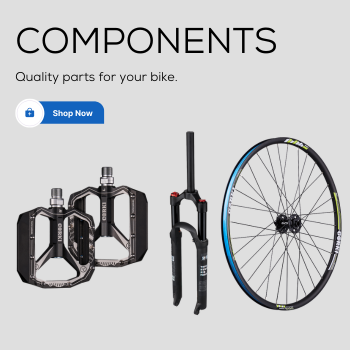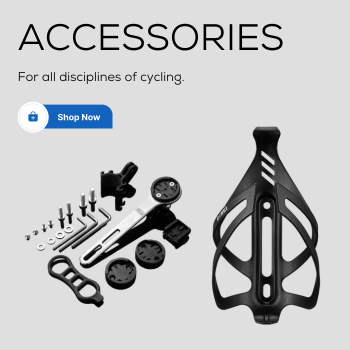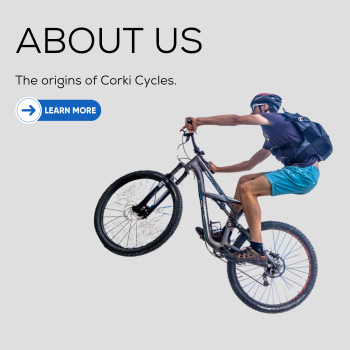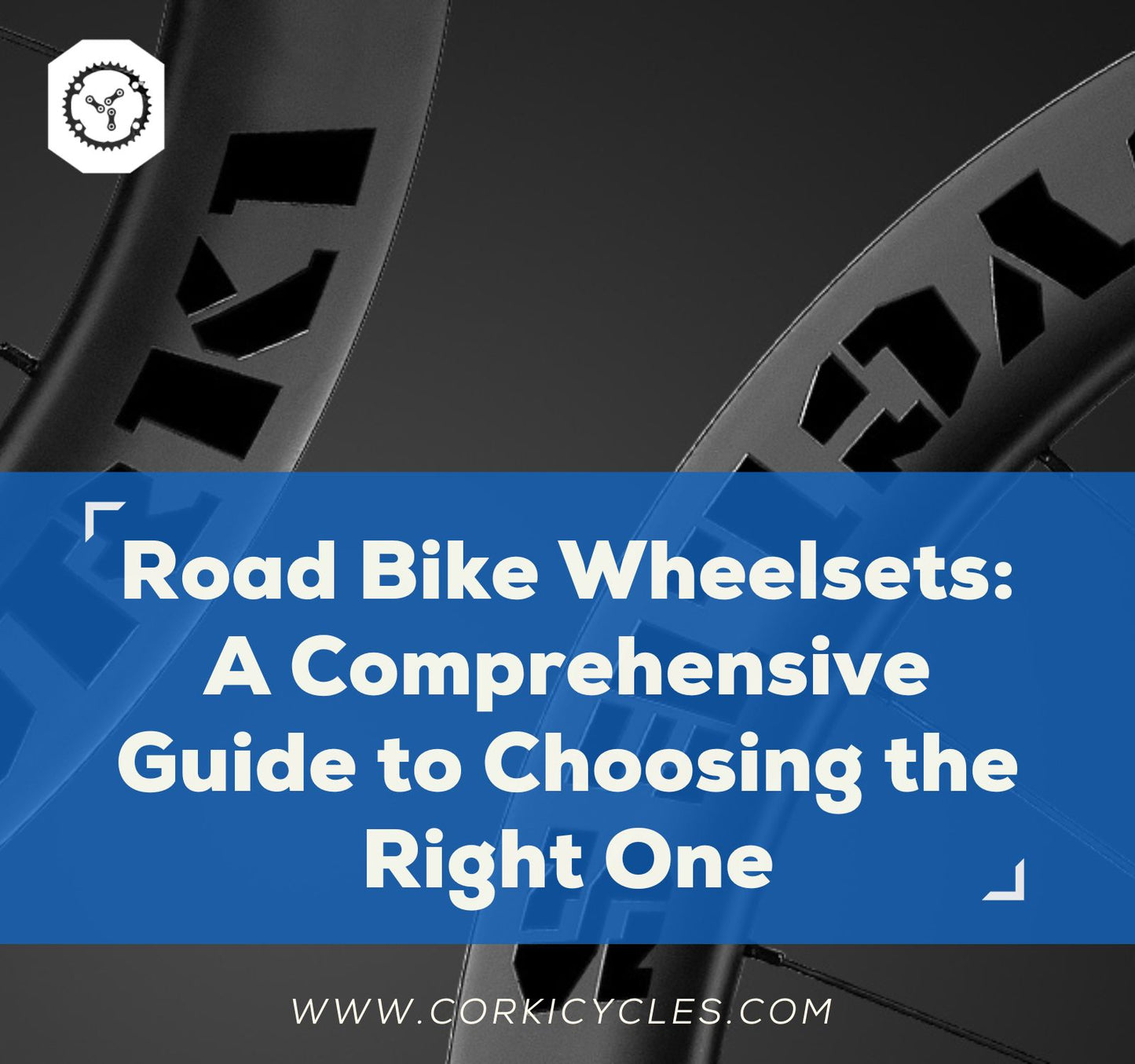
If you want to upgrade your road biking experience, you might consider new bike wheels. Countless options are available in the market due to ever-evolving bike technology. With so many choices, choosing the right road bike wheels that fit your needs can be confusing. But don't worry. We are here to help you find the perfect fit.
- Understanding Wheelset Components
- Factors to Consider
- Choosing the Right Wheelset for Your Riding Style
- Budget Considerations
Understanding Wheelset Components
Rim: The Foundation of Your Wheel
The rim of a wheel is located on the outer part of the wheel. The tire is supported, and it provides a surface for braking. This is for bikes with rim brakes, not those with disc brakes.
Different rim materials offer different performance characteristics.
- Aluminum rims are a popular choice for entry to intermediate-level wheels. They are lightweight and affordable. They are easy to handle and ideal for those on a budget. However, they might not be as sturdy as other materials, so they can bend or dent on bumpy ground.
- Carbon fiber rims are considered the best for being light and aerodynamic. They offer excellent strength-to-weight ratios, making them a favorite for performance-oriented riders. But, the price is a big problem, and carbon rims can get damaged more easily and need special care.
- Steel rims are incredibly robust and durable. You'll often find them on heavy-duty bikes designed for rough terrain. The trade-off is their weight, which makes them less common on road and performance bikes.
The width of the rim will affect the width of the tire, which can have a notable impact on the comfort of the rider.
- Narrow rims (less than 25mm) are ideal for road racing. They offer reduced rolling resistance and improved aerodynamics. It’s the go-to choice for competitive cyclists.
- Medium width rims (25-30mm) strike a balance between aerodynamics and tire support. They are versatile and suitable for various riding conditions.
- Wide rims (25mm or more) provide better stability and support for wider tires. It’s suitable for gravel, cyclocross, and mountain biking. They also enhance overall comfort and traction.
Hubs: The Heart of Your Wheel
The hub is the central component that attaches the wheel to the bike and allows for its rotation. The rear hub's splines hold a cassette that works with the drivetrain to propel the bike forward. Road bike wheels, except for fixed-wheel bikes, have a rear hub with a "freehub" mechanism. This allows the bike to coast. The hub's design affects the ride's smoothness and efficiency.
Spokes: The Backbone of Your Wheel
The spokes are the material that connects the hub and rim of a wheel. The number of spokes usually differs between front and rear wheels. To make it stronger and stiffer, the rear wheel has more spokes than the front wheel. However, having more spokes can make the wheel heavier.
Spokes play an important role in a wheel's structural integrity, strength, and overall performance. Therefore, the spoke count is a crucial factor to consider when choosing a wheel.
- Spoke Count: A higher spoke count (e.g., 32 or 36) increases wheel strength and durability, making them ideal for off-road and heavy-duty riding. Lower spoke count (e.g., 16 or 20) reduces weight and improves aerodynamics, making them suitable for road racing.
- Spoke pattern (e.g., radial, 2-cross, 3-cross) affects wheel stiffness and strength. And 3-cross being a common choice for durability and stability.
Nipples: The Small But Important Details
Attaching spokes to a wheel requires a special nut known as a 'nipple.' A nipple helps adjust spoke tension, straightening a wheel when it rotates. Even though they are small, nipples have a big impact on your wheelset's quality.
Different materials are used to make nipples:
- Brass Nipples: These are known for their durability and corrosion resistance. However, they are relatively heavy.
- Aluminum Nipples: Aluminum nipples are lightweight and come in various colors. It can enhance the aesthetics of your wheelset. However, they are less durable than brass and may round off over time.
Factors to Consider
Weight
Lightweight wheels are designed to keep the bike's overall weight low by having a shallow rim profile and a low spoke count. This design not only reduces weight but also provides additional comfort. While deeper wheels are faster, they often result in a harsh ride quality. On the other hand, lightweight wheels often offer good levels of compliance. High-quality lightweight wheelsets usually weigh below 1,400 grams. Some extremely lightweight ones weigh under 1,000 grams for a pair!
Wheelsets made for general use have features that make them better for everyday use or training. These wheelsets often have an aluminum braking surface. Because it performs better in all weather conditions compared to carbon fiber. They also have more spokes to make them stronger and wider rims to fit larger tires. The wheelsets have these features, so they are heavier. High-quality ones weigh 1,500 to 1,800 grams.
When making wheelsets for loaded touring or heavier riders weighing 120kg or more, they are typically assembled by hand. These wheelsets have a higher spoke count of 32 or even 36 spokes. The extra spokes add strength and durability for regular use. However, these wheels can weigh over 1,900 grams due to the added strength.
Rim Depth
The depth of a bike wheel's rim has an impact on both its aerodynamics and handling. Deeper rims are better for aerodynamics, but they are more affected by side wind than shallow rims. This means they can be more difficult to handle.
- Shallower rims (25-30mm) are lighter and more versatile. They are great for climbing and all-around performance. They handle crosswinds better, which can be important for stability and safety.
- Deeper rims (40mm or more) make the bike go faster by reducing wind resistance. This is especially true on flat terrain. They can also look visually appealing. However, deeper rims can be heavier and less stable in crosswinds.
It's important to note that not all deep rims are created equally, with significant variations in profile between brands. The best options prioritize fast speeds while maintaining control in crosswinds.
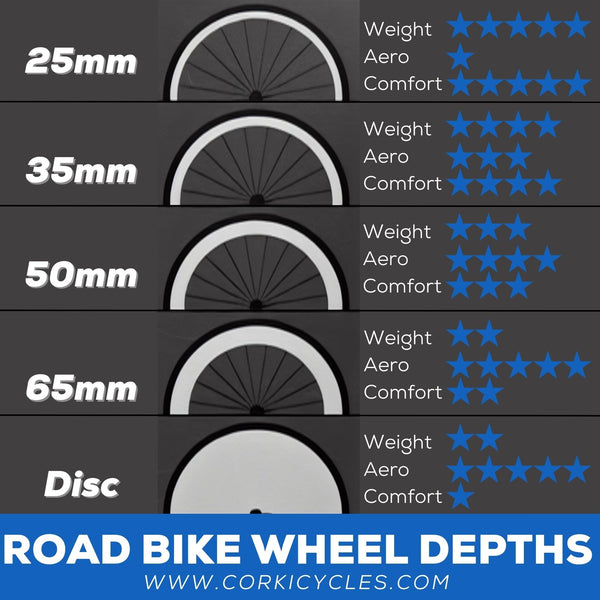
Aero vs. Non-Aero
- Aero wheels are designed to reduce air resistance, making them great for time trials and flat road racing. These can help you go faster, but they may not speed up as quickly.
- Non-aero wheels are designed for all-around performance. They offer a balance of weight, aerodynamics, and stability. These wheels are versatile and suitable for various riding conditions.
The choice between aero and non-aero wheels depends on your riding goals.
If you like time trials, triathlons, or flat road racing, aero wheels can be your loyal friend. Non-aero wheels are suitable for a wide range of riding styles and conditions. If you enjoy riding on various terrains like mixed terrain or climbing, then non-aero wheels are a great choice for you. They perform well and offer a balanced performance that suits all-around riding.
Tubular vs. Clincher vs. Tubeless
Tubular Tires
Tubular tires are constructed with a sewn casing that encloses an inner tube. They are glued or taped onto specially designed tubular rims.
Pros
- Low rolling resistance
- Supple ride quality
- Lightweight
Cons
- Difficult to install
- Limited repair options
- Costly (tires and rims)
- Not ideal for everyday riding
Tubular tires are best suited for experienced and competitive cyclists. Especially those who focus on road racing and time trials. These tires are a popular choice for professional racers and advanced riders who want to minimize rolling resistance. However, installing and repairing them can be complex. If you're an advanced rider willing to deal with these complexities, then tubular tires may be a great option for you.
Clincher Tires
Clincher tires are the most common type and feature a bead that hooks onto the rim. They use inner tubes to hold air.
Pros
- Easy to install
- Widespread availability
- Easy to repair
Cons
- Slightly higher rolling resistance
- A little bit heavier
Clinchers are versatile, user-friendly, and well-suited for all levels of cyclists. They balance performance and reliability, making them a solid choice for everyday cycling. Clincher is a safe bet for most new bike purchases.
Tubeless Tires
Tubeless tires have no inner tube and use a sealant to maintain air pressure. They typically require tubeless-ready rims.
Pros
- Reduced rolling resistance
- Puncture resistance
- Lower tire pressure
Cons
- Initial setup can be finicky
- Maintenance required (sealant)
- Limited compatibility
Tubeless is for riders who want to go faster and avoid flat tires. This technology is commonly used in mountain biking and cyclocross. It is also gaining popularity on the road.
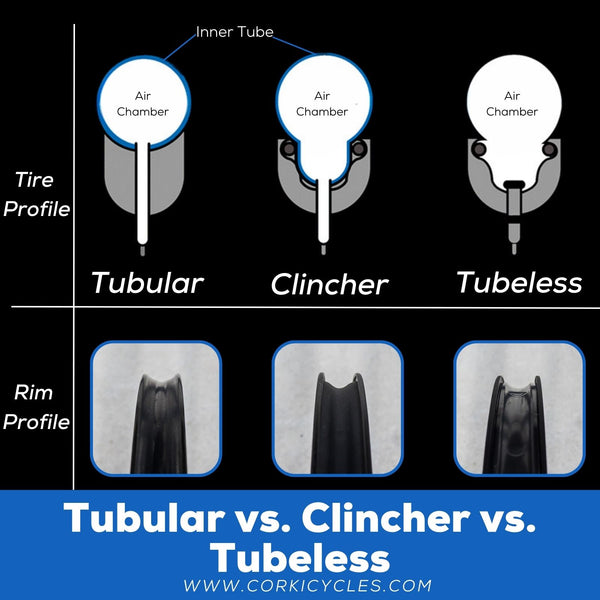
Hub Type and Compatibility
To make sure your bike is compatible, check the freehub system made by the bike's manufacturer.
Freehubs by Shimano and Campagnolo have different spline systems that connect the cassette to the freehub. Although they both use a spline system, the diameter and spline type vary, making them incompatible. Shimano freehubs are compatible with SRAM cassettes but not with Campagnolo freehubs.
Most new bicycle wheels being sold nowadays are compatible with 11-speed cassettes. These wheels have a wider freehub body. It can fit 11-speed cassettes with wider spacing. To make them compatible with 8, 9, and 10-speed cassettes, all you need to do is use a washer. But, please remember that older 8, 9, or 10-speed hubs cannot fit an 11-speed cassette. This is true for all hubs except for Campagnolo wheels and cassettes.
Choosing the Right Wheelset for Your Riding Style
Road Racing
For road racing, where speed and agility are paramount, you'll want lightweight, aero, and responsive wheelsets. When choosing rims, prioritize aerodynamics and low weight for better acceleration. Also, consider hubs with smooth bearings for quicker response. These wheelsets help you go faster and respond quickly to pace changes, giving you an advantage in racing.
Climbing
Climbing demands a focus on lightweight and stiffness to tackle steep ascents efficiently. Opt for wheelsets with shallow or mid-depth rims to keep the weight down. Carbon or strong alloy rims are good options because they are stiff and transfer power efficiently. Climbing feels easier with lighter wheels, making it simple to conquer mountains.
Endurance and Touring
For endurance riding and touring, durability and comfort are key. When choosing wheelsets for long trips, pick ones that can handle the journey and offer comfort. Consider alloy rims for their reliability. To handle extra weight, like panniers, use a higher spoke count. Choose tires that offer good puncture protection and a comfortable ride. These wheelsets will keep you going for miles on end with peace of mind.
Gravel and Cyclocross
Off-road conditions require wide and sturdy wheelsets that can handle rough terrain. To improve stability and control, search for wheelsets with wider rims and tires. Solid and durable rims and a robust spoke count are essential to endure the bumps and shocks of gravel and cyclocross riding. Tubeless setups are a good option because they decrease the chance of flat tires. They also let you use lower tire pressures for better grip.
If you have the above riding preferences, these recommendations can be a guide for your purchasing. For everyday or general outdoor use, budget can be your main consideration.
Budget Considerations
Budget considerations are important in choosing wheelsets. Here's an overview of three wheelset price categories:
Entry-level Wheelsets (under 500$)
If you're new to cycling or want a budget-friendly upgrade, consider an entry-level wheelset. Wheelsets are usually made of alloy and are both reliable and affordable. While not as advanced as pricier options, they still enhance your riding experience. They're suitable for general road riding and everyday use.
Come and check out our new road bike wheels collection. The Tarmac Series is a durable and budget-friendly choice which is competitive in this price range.
Mid-range Wheelsets (500$-1,500$)
Upgrading to mid-range wheelsets can significantly improve your cycling experience. These options are better than entry-level ones. They use lighter alloy or even carbon rims. This means you'll have better performance and less weight. If you want to go faster in road races or climb mountains, mid-range wheelsets are perfect. They also help you cycle smoothly for longer distances.
High-performance Wheelsets (Over 1,500$)
High-performance wheelsets are made for serious and competitive riders. They care about weight, aerodynamics, and cutting-edge technology. The wheelsets are made of light carbon fiber and have deep rims that make them more aerodynamic. These bikes are great for pro racers, experienced road cyclists, and anyone who wants to go faster.
Conclusion
Upgrading to a qualified road bike wheelset can significantly enhance your cycling experience. After reading this blog post, you will know how to choose a road bike wheelset that suits your riding style and budget. We hope this blog post has given you useful information to help you choose the right one. Our goal is to help you make an informed decision.

